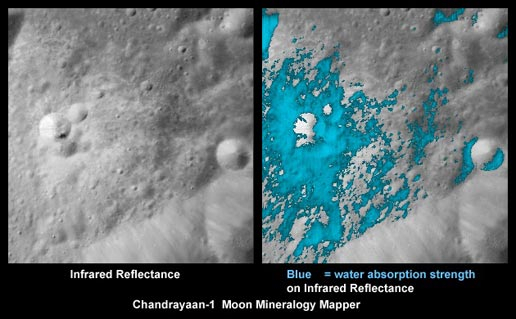
Various lunar missions had previously revealed that there are ice deposits inside the craters that are located in the south polar region of the moon. Until now, researchers believed that the ice deposits inside these craters might have formed at the same time, and they speculated that they are billions of years old. However, a new study conducted by researchers including those from Brown University has suggested that ice deposits in the polar region might have formed more recently than previously thought.
Researchers made this conclusion after analyzing data from NASA's Lunar Reconnaissance Orbiter, which has been orbiting the moon since 2009. In its mission, NASA's Lunar Reconnaissance Orbiter had noted the ages of craters in which evidence of south pole ice deposits was found.
The report published in scientific journal Icarus revealed that counting the number of smaller craters inside giant ones helped scientists calculate the ages of these craters. It should be noted that researchers had an approximate idea regarding the frequency of asteroid impacts on the moon in the course of time, and it helped them establish the frequency in which craters are created, thus allowing them to calculate the age of these terrains.
Researchers noted that the majority of the ice deposits in large craters were as old as 3.1 billion years. However, water in smaller craters seemed quite fresh, and it indicates that some of the ice deposits in the south polar region of the moon were recently formed.
"That was a surprise, there hadn't really been any observations of ice in younger cold traps before. The ages of these deposits can potentially tell us something about the origin of the ice, which helps us understand the sources and distribution of water in the inner solar system. For exploration purposes, we need to understand the lateral and vertical distributions of these deposits to figure out how best to access them. These distributions evolve with time, so having an idea of the age is important," said Ariel Deutsch, a graduate student in Brown University's Department of Earth, Environmental and Planetary Sciences, and the author of the study, Daily Mail reports.
It should be noted that locating water and retrieving it from craters is very much crucial as humans are planning to build a permanent colony on the moon. Recently the Donald Trump administration had asked NASA to land humans on the moon by 2024, and they believe that building a lunar colony is very much essential to achieve the ultimate goal of Mars colonization.









